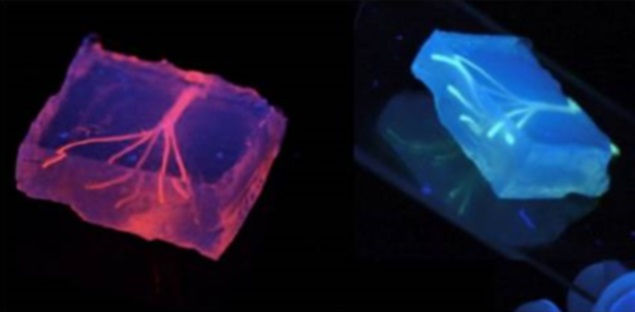- Home
- Science
- Science News
- New Breakthrough Paves the Way for 3D Printed Blood Vessels
New Breakthrough Paves the Way for 3D-Printed Blood Vessels

This obstacle may soon wither away as researchers have made significant headway towards fabricating blood vessels using a three-dimensional (3D) bio-printing technique.
"Creating artificial blood vessels remains a critical challenge in tissue engineering. We have attempted to address this challenge by offering a unique strategy for vascularisation of hydrogel constructs that combine advances in 3D bio-printing technology and bio-materials," said Ali Khademhosseini from Brigham and Women's Hospital (BWH) in the US.
The researchers first used a 3D bio-printer to make an agarose (naturally derived sugar-based molecule) fibre template to serve as a mould for the blood vessels.
They then covered the mould with a gelatin-like substance called hydrogel, forming a cast over the mould which was then reinforced via photocrosslinks.
"Our approach involves the printing of agarose fibres that become the blood vessel channels. But what is unique about our approach is that the fibre templates we printed are strong enough that we can physically remove them to make the channels," Khademhosseini added.
The study appeared in the journal Lab on a Chip.
(Image credit: Khademhosseini Lab)
Catch the latest from the Consumer Electronics Show on Gadgets 360, at our CES 2026 hub.
Related Stories
- Samsung Galaxy Unpacked 2025
- ChatGPT
- Redmi Note 14 Pro+
- iPhone 16
- Apple Vision Pro
- Oneplus 12
- OnePlus Nord CE 3 Lite 5G
- iPhone 13
- Xiaomi 14 Pro
- Oppo Find N3
- Tecno Spark Go (2023)
- Realme V30
- Best Phones Under 25000
- Samsung Galaxy S24 Series
- Cryptocurrency
- iQoo 12
- Samsung Galaxy S24 Ultra
- Giottus
- Samsung Galaxy Z Flip 5
- Apple 'Scary Fast'
- Housefull 5
- GoPro Hero 12 Black Review
- Invincible Season 2
- JioGlass
- HD Ready TV
- Laptop Under 50000
- Smartwatch Under 10000
- Latest Mobile Phones
- Compare Phones
- OPPO Reno 15 Pro Max
- Honor Win RT
- Honor Win
- Xiaomi 17 Ultra Leica Edition
- Xiaomi 17 Ultra
- Huawei Nova 15
- Huawei Nova 15 Pro
- Huawei Nova 15 Ultra
- Asus ProArt P16
- MacBook Pro 14-inch (M5, 2025)
- OPPO Pad Air 5
- Huawei MatePad 11.5 (2026)
- Xiaomi Watch 5
- Huawei Watch 10th Anniversary Edition
- Acerpure Nitro Z Series 100-inch QLED TV
- Samsung 43 Inch LED Ultra HD (4K) Smart TV (UA43UE81AFULXL)
- Asus ROG Ally
- Nintendo Switch Lite
- Haier 1.6 Ton 5 Star Inverter Split AC (HSU19G-MZAID5BN-INV)
- Haier 1.6 Ton 5 Star Inverter Split AC (HSU19G-MZAIM5BN-INV)

















